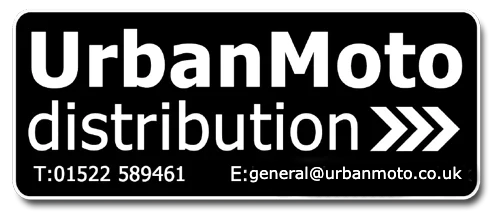LUBRICATING & CLEANING
LUBRICATING SEALED CHAINS
TSUBAKI Sealed chains are pre-lubricated at the factory with special grease. However, external (Rollers, inner- and outside plates) need re-lubrication every 500Km. (300 miles) or sooner, depending on usage and conditions, will help keep the chain clean, corrosion free and ensure maximum performance. Use O-ring safe lubricant.

LUBRICATING ROLLER CHAINS
lubricate the chain before riding and at intervals of 150 to 300 Km. (100 to 200 miles). Make sure that the lubricant penetrates into the spaces between the pins, rollers and bushings to ensure longer wear life (For reference see OWNER'S MANUAL and/or OEM SHOP MANUAL).
Using a lubricant specifically formulated for roller chain using the extender tube to direct the lube between the pins, rollers and bushings.
CLEANING
To clean your Tsubaki chain, it is first necessary to raise the motorcycle on its centre stand with the engine off and the transmission in neutral. Then rotate the rear wheel of the motorcycle (using care to keep your fingers away from the sprockets and chain), spray a moisture displacement lubricant to one side of the chain. After 2 or 3 full revolutions, switch sides and repeat. In this manner you have floated the dirt off the chain and now you need to wipe off the chain with a clean cloth to remove the excess lubricant and dirt residue. Never use a flammable solvent such as gasoline, benzine or kerosene. Additionally, never use water, detergents, steam cleaner or a coarse brush as these damage the chain.
Installation
! WARNING
USE CARE TO PREVENT INJURY COMPLY WITH THE FOLLOWING TO AVOID SERIOUS PERSONAL INJURY
- Chain installation or removal should be performed by a qualified motorcycle mechanic using proper tools.
- When installing or removing chain, the recommended procedures contained in the motorcycle manufacturer's "Shop Manual" or "Owners Manual" must be followed, including replacement with an equivalent chain as to type, size, pitch and gearing. Improper chain application can void all warranties expressed or implied.
- When installing or removing chain:
- Engine must be turned off and transmission in neutral.
- Eye protection is required. Wear safety glasses, protective clothing, gloves and safety shoes.
- Prevent uncontrolled movement of chain and parts.
- Tools must be in good condition and properly used.
- Do not attempt to connect or disconnect chain unless you know the chain construction, including the correct direction for connecting link removal or insertion.
- All guards, guides, tensioners or other parts removed must be replaced before operating the vehicle.
Failure to install a replacement chain that is equivalent to that of the motorcycle's original equipment as to type, size, pitch and gearing is dangerous and can result in serious injury and property damage.)
SEALED CHAIN

Mount chain on new sprockets using the master link supplied with the chain. New sprockets are highly recommended for maximum chain life and durability.
Note: See motorcycle owner's manual
ROLLER CHAIN

Mount chain on new sprockets using the master link supplied with the chain. New sprockets are highly recommended for maximum chain life and durability.
Note: See motorcycle owner's manual. - Tsubaki chains have optional rivet type master links available for OEM application requirements.
TIPS
- Use special tools
- Installation by a professional is highly recommended
(Most chain problems are caused by improper installation/riveting)
Frequently check the wear on the front and rear sprocket teeth. Examine both the tooth profile and the thickness. These components must be replaced if there are missing or broken teeth, or if they show noticeable wear or other damage.

|
WARNING |
Both sprockets must be chosen in accordance to the dimensions of the original ones.
When selecting a replacement front sprocket, always choose a heat treated type.
For high power motorcycles, it is recommended to use heat treated rear sprockets (with induction hardened teeth) which offer excellent resistance against wear.
When assembling, it is strongly recommended to replace worn or damaged bolts, nuts and washers. Once they have been installed, make sure that the sprockets do not have any eccentricity or wobbling while rotating.
Check the alignment between front and rear sprockets by using a straight edge or bar of sufficient length (min. 1 m - 3.3 feet) and continue as follows:
1 Place the bar on the side of the rear sprocket as near as possible to the rotation centre in order to obtain the longest bearing surface.
2 Check that the front sprocket is aligned to the rear as shown by the straight edge. Adjust the alignment to within 1mm (.04") by using the tensioning screws or shims, without compromising the alignment of the motorcycle wheels.









Leave a comment